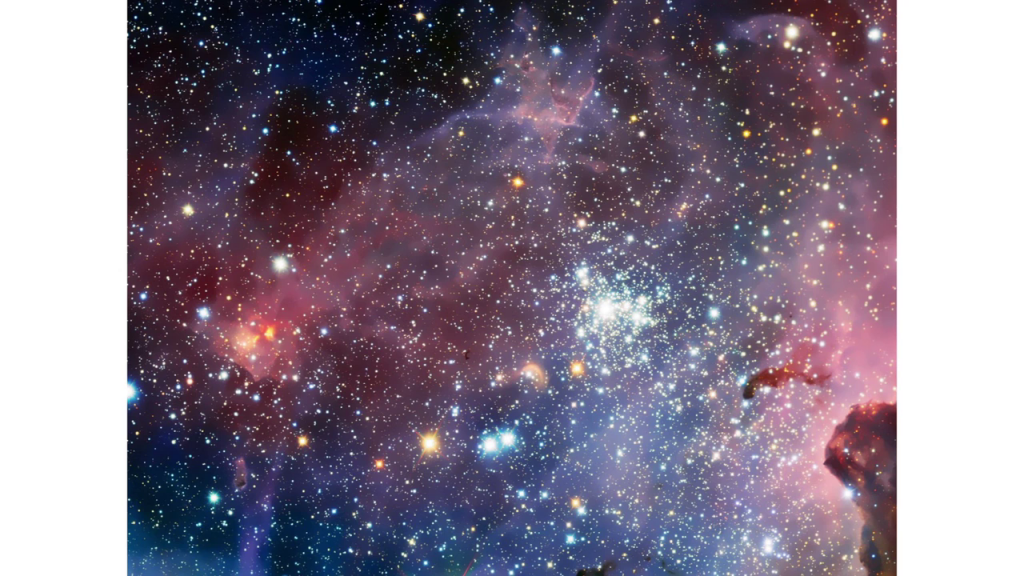My name is Johanna and I’m here in the capacity mostly in my role as the Assistant Director of the Processing Foundation, but my true colors are as an artist and I wanted to begin my talk by making a confession that I am a total outsider to your community in the sense that I don’t usually code. I wanted to give you a little story to locate me, and how I got to where I am today in being part of this community but from a different perspective.

Before I got an MFA in art, and before I got a BA in design at the Department that Casey and Chandler [inaudible] where I met Lauren, I decided to start my college career studying astrophysics at the age of 22. I was out of school for about six years, and during that time I was in a punk band and worked at a newspaper and did a lot of art things. But I decided to go back to school to study physics and specifically astrophysics because I was so excited about the possibilities there. And I just want to relay this one anecdote that summarizes my experience in the physics department at this city college where I was.
I had to take a Java class. This was about ten years ago and it was required for my major. I was the only woman in the class and I was definitely the only woman who ever went to the computer lab to get help with my homework from the tutors. One day I went in and I had scribbled on a notebook what I thought could answer this problem that I had to do, in code. I’d kind of sketched out my code by hand, and took it into the tutor. The tutor looked at me and then looked at my code and then looked back and me, and he just said, “You didn’t write this. You couldn’t have written it. Where did you get it?” And I tell you that story because it’s sort of to me the summary of most of my experience working in the computer science and physics departments at that school.
And my comparison is that when I went to UCLA and transferred into the design department, I had the complete opposite experience. I took my first Processing class, and I felt accepted and invited and that access to all kinds of different tools and technologies there for me.
So I think that my experience as an outsider and as an other in general is an integral part of how I approach this. And in introducing this talk and the Processing Foundation’s role in it, I think of this analogy of riot grrrl. I was a riot grrrl. I was a little bit too young to fully be a participant at the height of it, but I definitely considered myself one and was incredibly influenced by this movement. And now that Kathleen Hannah and I are both older, we’ve recognized that riot grrrl didn’t do such a good job at the beginning of being accessible to women of color. This is something that, I’m a woman of color who is white passing, and I think about this a lot, what kind of access to spaces I’m allowed because I pass. And I’ve heard Kathleen Hannah talk very well in public now about being critical later in a movement about your blind spots and mistakes in your beginnings.
When I think about the Processing project’s moment in time being fifteen years into its trajectory, I’m noticing that maybe in the beginning there weren’t so many explicit [inaudible] in our articulated mission to “diversity.” I think that the outsider and the other and the access that was allowed to these types has always been inherent in the project, and that’s something that I am drawn to. And I think that riot grrrl is a good example of seeing how a movement can be critical of its origins and apologize and be humble as it goes forward. So I take great hope from that.

The last thing I want to talk about is my place right now. It’s very bizarre to me to be part of what I consider to be an institution. This is anathema to a punk, that you would ever be part of an institution. I always think of this kind of a building when I think of institutions, and I’ve always that that the definition of an institution would be that which no longer changes. The norms, the codifications of normative behaviors or actions, is what makes you an institution.
But I recently had to confront this definition that I had that was very suspicious of authority when I took a Merleau-Ponty class in graduate school. He had an idea of the institution that was different, that I want to take up as an official Processing Foundation mantra, which is that an institution is defined by having to constantly re-institute itself. That means a continuous process of growth, and change, and criticality, and self-awareness. I think that when we think about an institution that can grow and learn from its mistakes and have new goals, that’s incredibly exciting to me.

I want to go back to this slide because I couldn’t think of a good slide for the future, and I thought it was a good metaphor to put in the vastness and potential of space, and still the unknowing place that we have in it, and our enthusiasm and hope for discovering new things.
Thank you.
Further Reference
Overview page at the Studio for Creative Inquiry’s web site.
